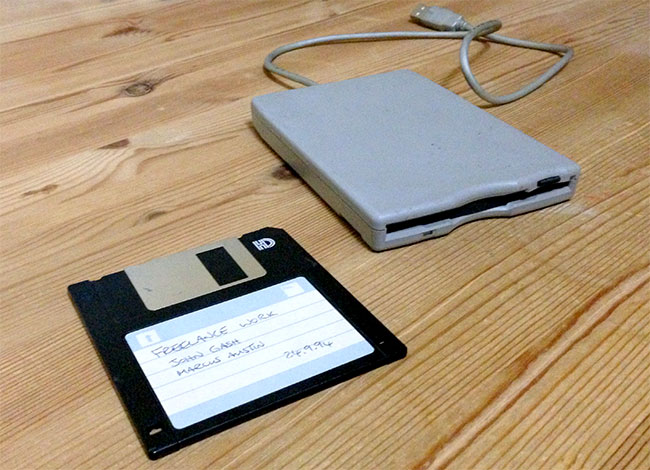This article is more than 1 year old
Quick Q: How many FLOPPIES do I need for 16 MILLION image files?
Don’t fret, I might still have a Zip disk knocking about
Iomega Zip drives and more blasts from the past
Here was such a case, I thought. I could pick out one of my old optical drives and save the day. I’m pretty sure I have owned at least three different formats over the years but despite me trekking through the jungle of my old hardware at home for an hour, they were nowhere to be found.
As I swished my machete to and fro through the thick undergrowth of knotted cables and bent card slot protectors, ghosts of other such storage devices came to haunt me. I distinctly remember buying a Syquest removable drive and two 88MB Syquest disks shortly after turning freelance. Remember 88-meg Syquests? They were heavy, fragile and rattled about in a motorbike courier’s shoulder bag like pound coins in a charity collector’s bucket.
I also expected to come across the remains of several blue Iomega Zip drives which enjoyed a reputation of being ‘cool’. But why did I buy several drives? Ah yes, now I remember: I kept breaking them and had to buy replacements ... so maybe they weren’t so cool after all.
Those little Zip disks were OK, though. At the time, I was CD editor for a computer mag and used Zips to send shareware and interface graphics to our C++ programmer elsewhere in England. Zip disks in those days were were faster to read/write and (believe it or not) cheaper than CD-Rs. On one occasion, the programmer put ten of my Zip disks in a Jiffy bag and sent them back to me by First Class post; noting the date and time when the postman delivered the envelope to my door, we calculated that his First Class stamp was a considerably faster data transfer medium than ISDN.
Anyway, none of these devices was anywhere to be found in the snarled wastes of ancient Dabbs tech. I had always intended bequeathing them to the London Science Museum or the National Media Museum in Bradford, but I suspect I must have taken them down to the recycling dump in a fit of pique a few summers ago. This is just as well, since even if I had found them all, where was I going to find a computer with the necessary SCSI and parallel ports, let alone device drivers, to plug them into?
What I did unearth was this:

Dabbsy's floppy drive: not as old as you think ... and neither is the floppy drive
It’s an external 3.5in floppy drive and, despite appearances, not nearly as old as you might think: look, it connects via USB and still mounts floppies without additional drivers. For younger readers, I have placed a 3.5in floppy disk next to it so you get an idea what I’m talking about. You know that weird button graphic you see in software interfaces that symbolises the ‘Save’ action? It’s supposed to look like one of these. Ah bless.
Given that the 16-page document I was working on last night won’t fit onto a floppy – I would have needed another 50 of them – I doubt this is going to be of much use to anyone during our data migration across Europe, the US and Australia. But it may still salvage my personal Holy Grail of obsolescence: somewhere in this house lies a floppy disk on which I backed up an Adobe Illustrator file containing an early-1990s PC Magazine wallchart of THE INTERNET.
That’s right, THE INTERNET as a map... that you put on a wall with Blu-tack, stand back and look at. Unbelievable but true but difficult to prove without evidence. The hunt goes on and if it ever turns up, you’ll be the first to know.
Intercontinental media libraries? Bah! That trifling task is forgotten as I curl my bullwhip, holster my revolver and don my fedora before returning to my home rainforest of desktop storage. Indiana Dabbs is going in. ®
 Alistair Dabbs is a freelance technology tart, juggling IT journalism, editorial training and digital publishing. Even though it seems several items have met inglorious fates down at the dump, he remains burdened by thousands of useless cables: chunky SCSI, original Firewire, USB 1.0, 9-pin serial, 25-pin parallel, mono audio, AppleTalk cables and an unseemly quantity of supposed USB leads with proprietary connectors.
Alistair Dabbs is a freelance technology tart, juggling IT journalism, editorial training and digital publishing. Even though it seems several items have met inglorious fates down at the dump, he remains burdened by thousands of useless cables: chunky SCSI, original Firewire, USB 1.0, 9-pin serial, 25-pin parallel, mono audio, AppleTalk cables and an unseemly quantity of supposed USB leads with proprietary connectors.
